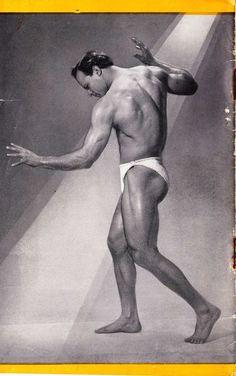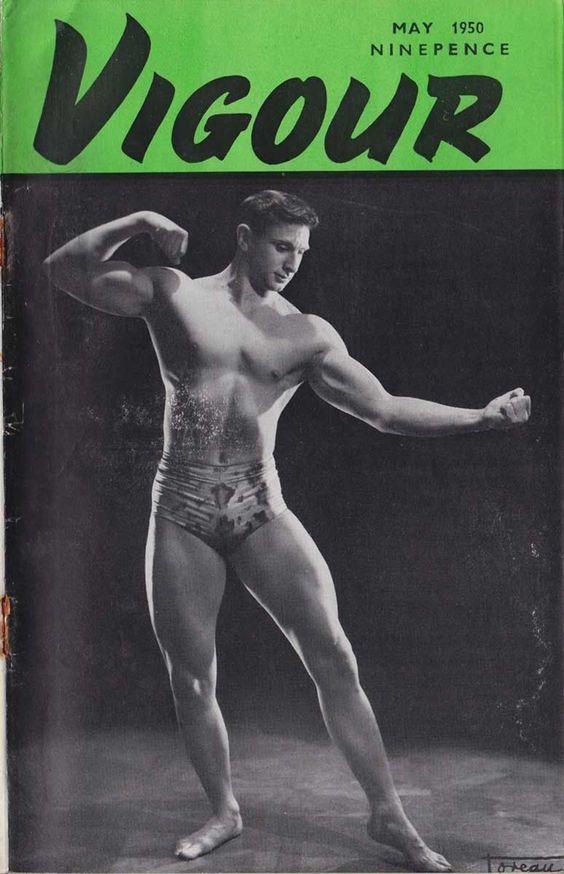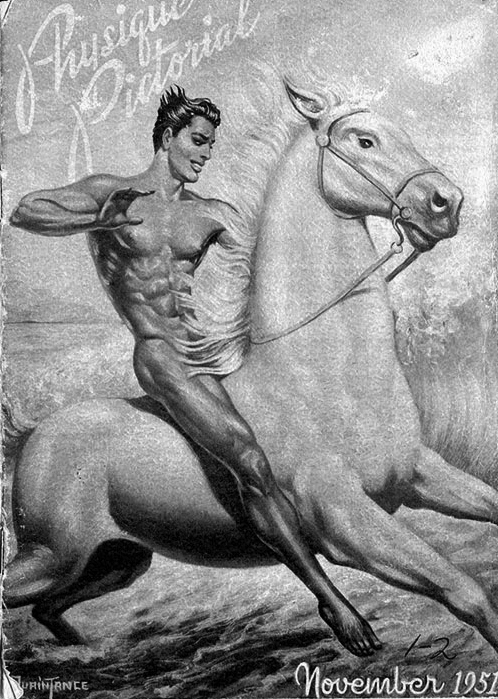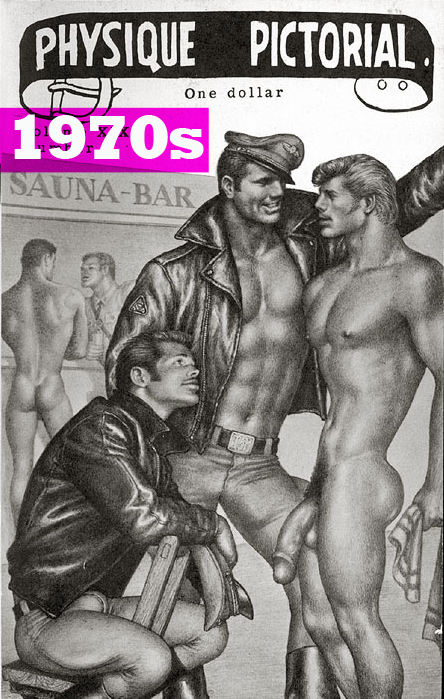Beefcake from across the pond: The male physique in Britain, part I
Author’s note: This is the first in a three-part series on the history of physique culture in Great Britain. Look for part II on our blog on Tuesday,...
2 min read
Bob Mizer Foundation : Dec 20, 2016 1:38:00 PM

Author’s note: This is the second in a three-part series on the history of physique culture in Great Britain. Look for part III on our blog on Tuesday, December 27.
More than a century before U.S. Supreme Court Justice Potter Stewart said of obscene materials, “I know it when I see it,” there was Great Britain’s 1857 Obscene Publications Act.
The legislation governed what could be produced and disseminated throughout the United Kingdom in the middle of the 19th century. And, just like Potter’s cryptic definition of obscene materials, British politician John Coleridge gave a vague definition of what merited an obscene work, saying it had to “deprave and corrupt.”
In a haunting mirror of Bob Mizer’s own struggles with the law, the act legalized the seizure of any obscene material to be held by law enforcement. Under the act, the prosecution had to prove that a “common law offense” was being committed, such as the sale of obscene materials to a plainclothes policeman (an error which, nearly 100 years later, would land Mizer himself in hot water with the law). The legislation also made legal the issuance of search warrants in places where such materials were suspected of being produced or housed.
 “The 1857 law was actually revised in 1959, and the UK law allowed exceptions for artistic merit or the public good,” says Dennis Bell, founder and president of The Bob Mizer Foundation. “Of course, in the United States, the 1973 court case of Miller v. California developed the three-tiered test to determine obscenity – first, whether the work could appeal to the average person’s prurient interests; second, whether the work depicts sexual conduct in an offensive way; and finally, whether the work lacks serious artistic value.”
“The 1857 law was actually revised in 1959, and the UK law allowed exceptions for artistic merit or the public good,” says Dennis Bell, founder and president of The Bob Mizer Foundation. “Of course, in the United States, the 1973 court case of Miller v. California developed the three-tiered test to determine obscenity – first, whether the work could appeal to the average person’s prurient interests; second, whether the work depicts sexual conduct in an offensive way; and finally, whether the work lacks serious artistic value.”
The Obscene Publications Act of 1959 included several notable prosecutions, including R v. Penguin Books Ltd. for publishing Lady Chatterley’s Lover, which was published in 1928. The book, which included explicit sex scenes and coarse language, was defended by literary critics and scholars as having artistic merit. Eventually, the court returned a ‘not guilty’ verdict; according to the BBC, it was a moment that many conservatives identified as the beginning of true moral decay in British society.
 Another case, which also resulted in a 'not guilty' ruling, involved adult film star Linda Lovelace's autobiography, "Inside Linda Lovelace" in the mid-1970s.
Another case, which also resulted in a 'not guilty' ruling, involved adult film star Linda Lovelace's autobiography, "Inside Linda Lovelace" in the mid-1970s.
At the same time, LGBT citizens in the United Kingdom, just like their American counterparts, read physique magazines in secret – and they struggled to connect with one another in a similar fashion. Some underground publications advertised gay-friendly events and venues using coded language, for instance; unfortunately, word spread slowly and irregularly, as distribution of such publications was often inconsistent.
According to The Daily Mail, some adventurous male librarian (many gay men worked as librarians in the UK at the time) might slip a book about homosexuality into circulation; BBC radio, meanwhile, was subverted in its advertisement of gay-themed parties, advertising them as “Ruby wedding parties.”
 The Wolfenden Report of 1957 officially decriminalized homosexual behavior, declaring that “homosexuality cannot legitimately be regarded as a disease” (it wasn’t until a generation later, in 1973, that the American Psychological Association removed homosexuality from its official list of mental diseases). That same year, the U.S. Supreme Court ruled that media could be labeled obscene unless they included any ‘socially redeeming values.’
The Wolfenden Report of 1957 officially decriminalized homosexual behavior, declaring that “homosexuality cannot legitimately be regarded as a disease” (it wasn’t until a generation later, in 1973, that the American Psychological Association removed homosexuality from its official list of mental diseases). That same year, the U.S. Supreme Court ruled that media could be labeled obscene unless they included any ‘socially redeeming values.’
The trajectory of openly gay media in Great Britain roughly followed the same path as those in the United States. Only a decade after the Wolfenden Report, gay publications began rolling off the presses during the American Summer of Love in 1967. Less than a year later, the U.S. Supreme Court legalized sexual nudity, and models in physique and gay-themed magazines began dropping trousers.
Even now, decades after such an enlightened period empowered gay media producers and their consumers, such content continues to draw its critics and naysayers, both in the U.S. and the UK.
Next week: Gay publishers in Britain take their case to court in the Digital Age.

Author’s note: This is the first in a three-part series on the history of physique culture in Great Britain. Look for part II on our blog on Tuesday,...

The first issue of Physique Pictorial was a scant 16 pages long (cover to cover), but stimulating nonetheless (at least at the time). Featuring a...

Porn, cocaine and disco – these mainstays of the 1970s had America horny, hyper and ready to dance. And while they may have collectively peaked...

Where it was once a reflection of a lively industry, filled with work from a slew of international contributors, Physique Pictorial had become a...